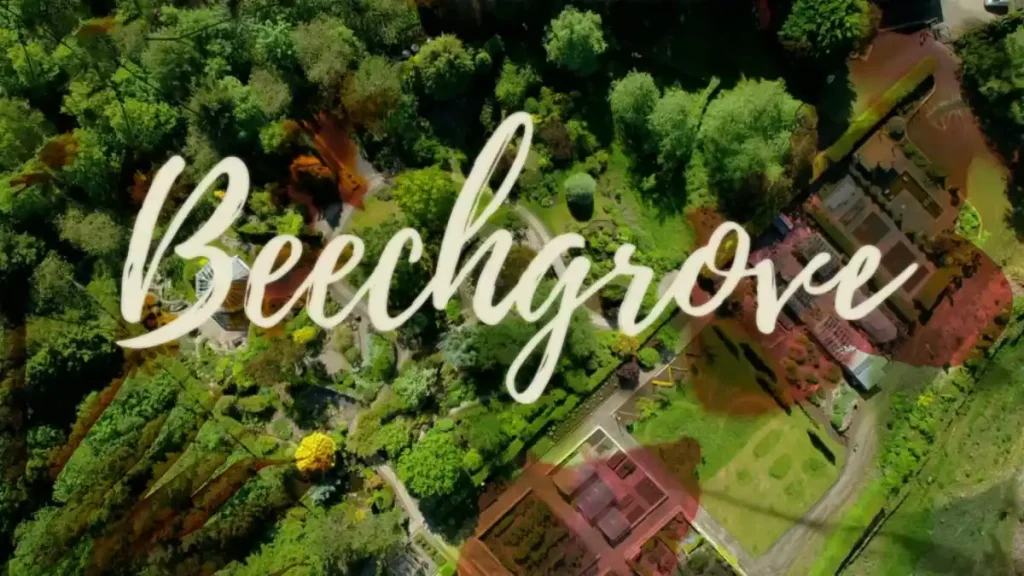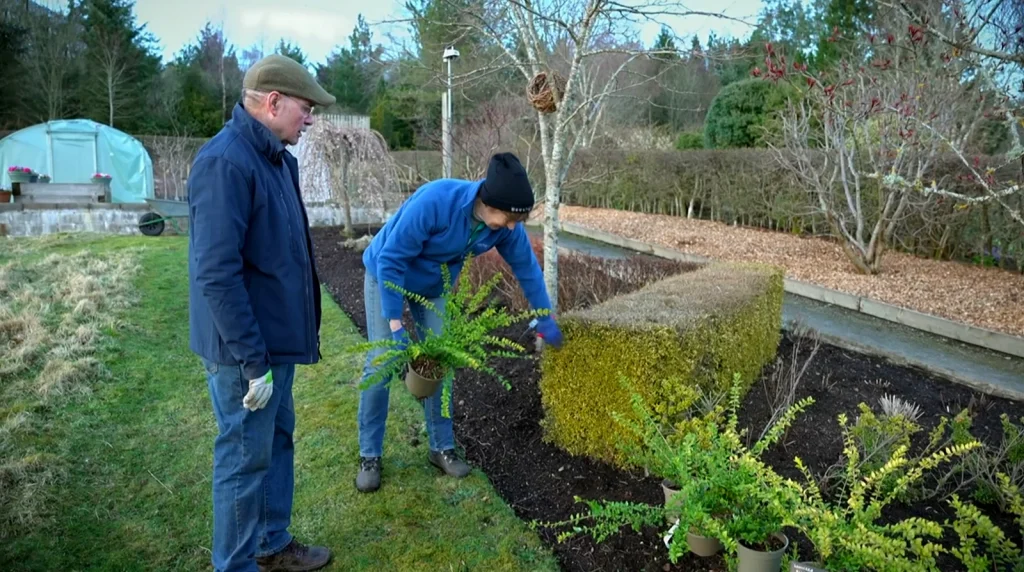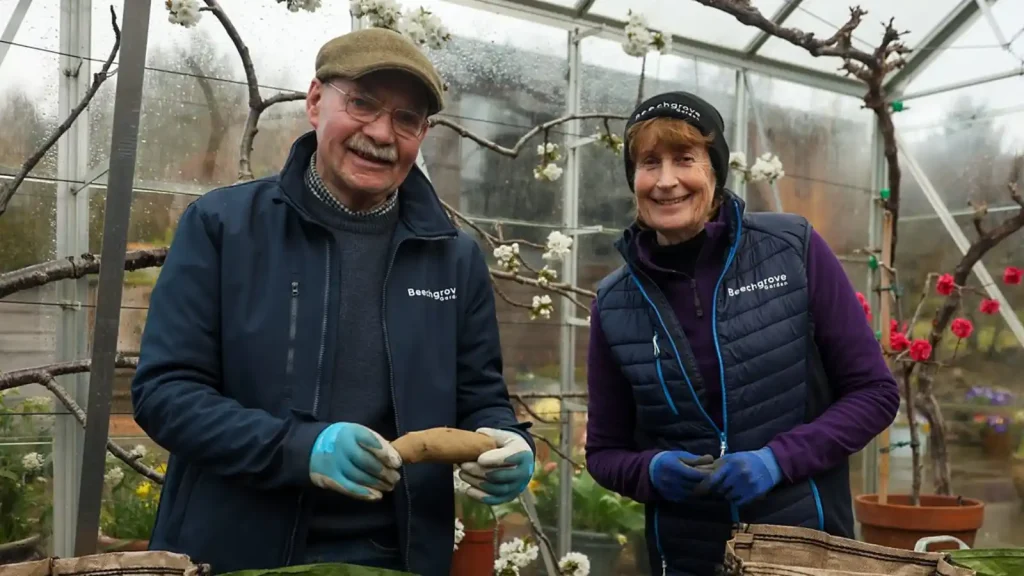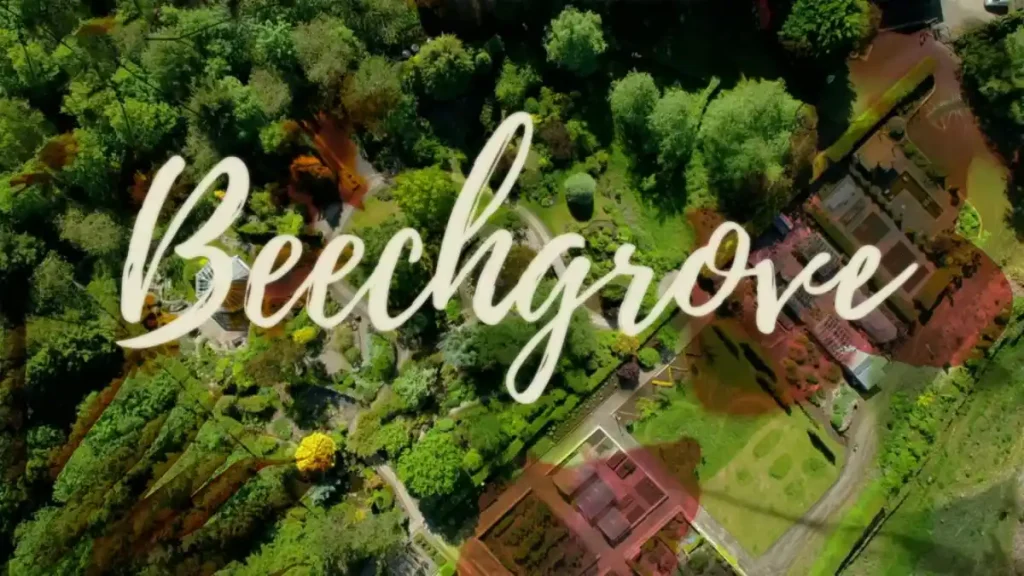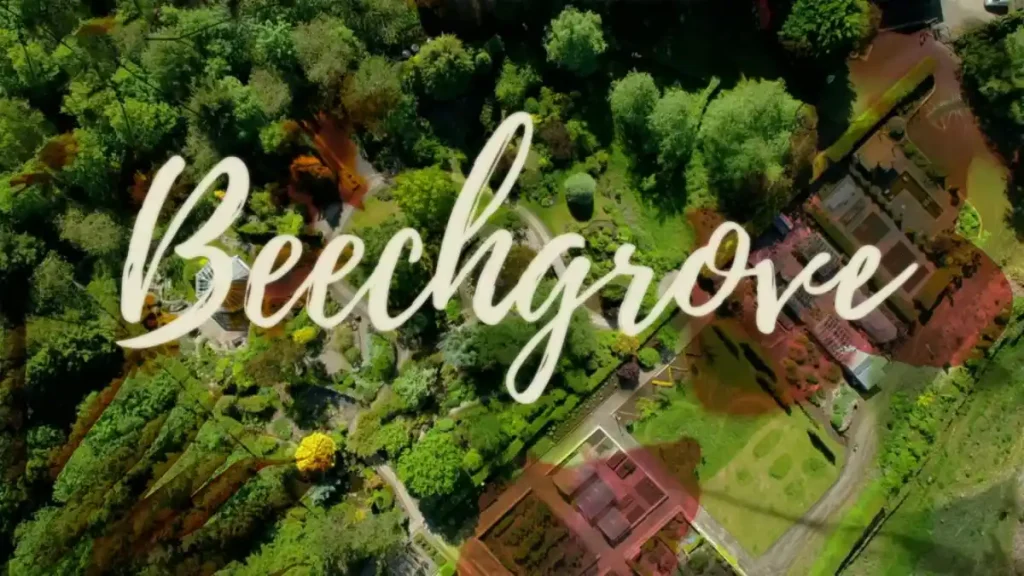The Beechgrove Garden 2024 episode 11: If you’re eager to attract more bird life to your garden, deck, or window box, this episode of Beechgrove Garden is brimming with invaluable tips and insights. Join Kirsty Wilson as she delves into the best seeds and plants to cultivate, creating an inviting haven for birds while supporting their needs. Discover how thoughtful planting can transform your space into a vibrant, avian-friendly environment.
In this episode, Kirsty explores a variety of flora that not only beautify your garden but also serve as essential resources for birds. From berry-bearing shrubs to nectar-rich flowers, she covers an array of options that cater to different bird species. Learn about the specific plants that provide food, shelter, and nesting materials, ensuring that your green space becomes a sanctuary for local bird populations.
Meanwhile, Lizzie Schofield continues her meticulous work in the zig-zag garden, focusing on refreshing the perennials. Her efforts bring new life and vitality to the garden, showcasing the importance of maintaining and rejuvenating perennial plants. Lizzie’s expertise highlights the cyclical nature of gardening and the continuous care needed to keep gardens thriving.
In addition to Lizzie’s endeavors, this episode features a fascinating segment on the garden’s loofahs. Dive into the world of these versatile plants, often associated with bath sponges, and learn how they can be grown in a garden setting. This segment provides practical tips on cultivating loofahs, from planting to harvesting, and their various uses beyond the garden.
Kirsty also takes us through the process of planting on the hugelkultur bed, an innovative and sustainable gardening method. Built by Kirsty and Calum in April, this bed showcases how to create a fertile growing area using organic materials such as wood, compost, and mulch. Hugulkultur beds not only enhance soil fertility but also improve water retention and support diverse plant life. Kirsty’s demonstration offers a step-by-step guide to implementing this technique in your garden, emphasizing its benefits and ease of maintenance.
As the episode unfolds, you’ll receive expert advice on growing delicious summer melons and autumn pumpkins. These fruits, known for their rich flavors and culinary versatility, can be a delightful addition to your garden. Learn about the ideal growing conditions, from soil preparation to watering schedules, ensuring a bountiful harvest. Tips on pest control and disease prevention are also covered, helping you to cultivate healthy and productive plants.
The Beechgrove Garden 2024 episode 11 is packed with practical gardening knowledge and inspiration. Whether you’re an experienced gardener or just starting, this episode provides valuable insights to enhance your gardening journey. Tune in to discover how to create a bird-friendly garden, revitalize your perennial plants, explore the wonders of loofah cultivation, and master the art of growing melons and pumpkins. With the guidance of Kirsty, Lizzie, and Calum, you’ll be equipped with the knowledge and skills to transform your garden into a thriving oasis.
The Beechgrove Garden 2024 episode 11
How to Grow Melons
Learn how to grow delicious melons in your garden with our expert guide. Discover the best varieties, tips for sowing and planting, and essential care advice for a bountiful harvest.
Choosing the Right Variety
Selecting the right melon variety is crucial for a successful harvest. We recommend choosing varieties suited to your specific growing conditions. For outdoor cultivation under cloches or in cold frames, cantaloupe varieties are ideal, while both cantaloupe and honeydew melons thrive in greenhouses or polytunnels.
Hybrid F1 varieties are known for their vigor and productivity, albeit at a higher cost. Look for varieties with the prestigious RHS Award of Garden Merit (AGM), indicating exceptional performance in trials. For a firsthand look at various melon varieties and cultivation techniques, visit the RHS gardens for inspiration and valuable insights.
Recently, grafted melon plants have emerged as a resilient option, offering increased disease resistance and consistent yields even in challenging conditions. These plants are well-suited for repeated cultivation in the same location, such as greenhouse borders. However, they come with a higher price tag and limited variety choices.
Sourcing Your Melon Plants
Melon seeds are readily available in garden centers and online seed suppliers. Young melon plants can also be purchased in spring and early summer, though variety options may be limited. For those seeking extra vigor, grafted melon plants are available from select online vendors. Opting for young plants is a convenient choice if you desire only a few plants or lack the space, time, or warm conditions necessary for seed germination and raising seedlings.
Sowing Melon Seeds
As tender plants, melons require warmth for germination and growth. Ideally, sow seeds indoors in mid-to-late April, placing two seeds per small pot at a depth of 1.5cm. A heated propagator offers optimal conditions for germination at 18–21°C (64–70°F), but a consistently warm, sunny windowsill can also suffice.
Seedlings typically emerge within a week. If both seeds germinate, remove the weaker one to ensure optimal growth. With consistent warmth, ample light, and regular watering, melon seedlings flourish rapidly.
Planting Your Melons
When your young melon plants, whether grown from seed or purchased, develop three or four leaves in early summer, they are ready for their final planting location. Ensure a seamless transition without drastic temperature fluctuations to avoid hindering growth or causing plant death.
For greenhouse planting, melons can be placed in borders, growing bags, large containers, or cold frames from late May onwards, once temperatures consistently exceed 12–15°C (53–59°F). Containers should be at least 45cm (18in) wide and deep, filled with peat-free multipurpose potting compost. Position one plant centrally, firm it in gently, and water generously. Standard growing bags can accommodate up to two melon plants.
Before planting in a greenhouse border, enrich the soil with two bucketfuls of garden compost or well-rotted manure per square yard/meter, along with a moderate amount of general-purpose fertilizer like Vitax Q4 or blood, fish, and bonemeal. Space plants 45cm (18in) apart at the base of supports.
For outdoor planting, harden off melon plants in a coldframe, mini-greenhouse, or under cloches before transplanting from early June onwards. Ensure nighttime temperatures remain above 12–15°C (53–59°F). Select a warm, sunny, and sheltered location with fertile, well-draining soil. Incorporate up to two buckets of garden compost or well-rotted manure per square yard/meter, and lightly apply a general-purpose feed like Vitax Q4 or blood, fish, and bonemeal.
Prepare the soil several weeks in advance by covering it with cloches or biodegradable membrane, leaving them in place after planting. For biodegradable membrane, simply cut holes at each planting spot. Space plants at least 90cm (3ft) apart if trailing or 45cm (18in) apart if using supports. Alternatively, consider growing bags or large containers placed in a warm, sunny courtyard or patio, although fruit production may be challenging. Protect young plants from slugs and snails.
Caring for Your Melon Plants
Proper care ensures robust growth and abundant fruiting. Melons require consistent warmth, frequent watering and feeding, training, support, and meticulous attention to pollination and fruit development.
Training and Supporting
Melons, being climbers or scramblers, can be grown vertically on supports or allowed to trail on the ground. Vertical growth maximizes space, especially in greenhouses. Sturdy bamboo canes, netting, vertical strings, or trellis offer suitable support for their twining tendrils. Ensure robust and well-anchored supports to accommodate the plants’ large size and heavy fruits.
Trailing melon plants can occupy significant space and are susceptible to slugs and snails, so protect young plants accordingly. Choose a training method early on. For vertical growth, one main stem can ascend the support, with side-shoots trained horizontally and pinched out after seven to nine leaves to encourage flowering shoots. Alternatively, pinch out the growing tip after five leaves to promote side-shoot development. Retain the four strongest shoots, removing others. These shoots can climb supports or trail. In a large cold frame, arrange them in an X-shape, or direct two shoots in each direction under a long tunnel cloche.
Watering
Regular and consistent watering is essential for melon plants, especially during fruit development. Daily watering may be necessary in hot weather. Maintain evenly moist but not saturated soil or potting compost. Prevent water from pooling around the stem base to avoid rotting. When watering, avoid wetting leaves to prevent fungal diseases.
Mulching
When growing melons vertically, apply a thick layer of garden compost or well-rotted manure around the root zone, leaving a gap around the stem base. This conserves moisture and suppresses weeds. For trailing stems, consider using biodegradable membrane to cover the soil.
Feeding
Once fruits reach the size of walnuts, initiate weekly feeding with a high-potassium liquid fertilizer. Discontinue feeding and reduce watering as fruits ripen in late summer and foliage declines.
Temperature and Humidity
In greenhouses, elevate humidity during hot weather by damping down—pouring water over paved or concrete flooring to facilitate evaporation. High humidity also deters red spider mites and powdery mildew. Employ shading to maintain temperatures between 18–25°C (64–77°F) and prevent leaf scorching in greenhouses during sunny spells. Enhance ventilation by opening greenhouse doors and vents, as well as the ends of tunnel cloches and coldframe roofs.
Pollination and Fruit Care
Under cover, melon flowers may require hand-pollination. Alternatively, open tunnel cloches, cold frames, and greenhouse doors and vents during the day to admit pollinating insects. Note that once a fruit begins forming, further fruit development may cease. To prevent this, maintain cover until multiple flowers open, then ventilate for insect access.
Even with open vents, pollination can be inadequate in greenhouses and tunnel cloches, necessitating hand-pollination. Melons produce distinct male and female flowers, requiring pollen transfer from male to female for fruit development. Female flowers are easily identified by a small fruitlet behind them. Pick a fully open male flower, carefully remove the petals to reveal the pollen-bearing anthers, and gently press it into the center of open female flowers. One male flower can pollinate several females. Alternatively, use a small paintbrush to transfer pollen from a male flower to the center of up to four female flowers.
To ensure optimal fruit size and ripening, limit the number of melons per plant. When young fruits resemble gooseberries, select the best one or two on each side-shoot and remove other flowers and fruits. Pinch out the tip of each side-shoot two or three leaves beyond the fruits, and remove any subsequent growth to channel energy into fruit development.
Aim for four to six fruits per greenhouse plant and up to four on outdoor plants, representing the maximum likely to ripen by season’s end. If stems trail on the ground, place a tile or wood piece beneath developing fruits to prevent discoloration or rotting. For climbing stems, provide additional support as fruits enlarge and become heavier, using netting or hessian suspended like a hammock. In late summer, cover outdoor plants with cloches or fleece to prolong their lifespan and facilitate fruit ripening, as plants will deteriorate with declining night temperatures.
Harvesting Your Melons
Melons grown in greenhouses typically ripen from mid-summer into early autumn. Outdoor fruits usually ripen later in summer, with a shorter season due to plant decline as night temperatures drop. Keep cloches or plastic-free crop covers on hand to protect plants from cooler weather.
Harvest fruits when they emit their characteristic fragrance and develop cracks near the stem.
The Beechgrove Garden 2024: A Season of Growth, Change, and Inspiration
The Beechgrove Garden, Scotland’s beloved horticultural haven, returned in 2024 for another captivating season. With a fresh line-up of presenters, innovative gardening techniques, and a renewed focus on sustainability, the show continued to inspire and educate gardeners of all levels.
The 2024 season welcomed both familiar faces and new talent to the Beechgrove team. Seasoned presenters Carole Baxter and George Anderson were joined by Calum Clunie, Kirsty Wilson, and Lizzie Schofield, each bringing their unique expertise and passion for gardening. Their combined knowledge and enthusiasm created a dynamic and engaging viewing experience.
The Beechgrove Garden’s commitment to sustainable gardening practices was a central theme throughout the season. The presenters explored various methods for reducing environmental impact, from composting and water conservation to using organic fertilizers and pest control. They also showcased innovative gardening techniques, such as vertical gardening and hydroponics, which can help maximize yields in limited spaces.
One of the highlights of the 2024 season was the transformation of the Beechgrove vegetable plot. The presenters experimented with different companion planting techniques to improve soil health and deter pests, while also trialing new and unusual vegetable varieties. The results were impressive, with a bountiful harvest of fresh, flavorful produce.
The flower gardens at Beechgrove were also a source of inspiration. The presenters shared their expert tips on creating stunning floral displays, from vibrant summer borders to delicate spring bulbs. They also explored the importance of pollinators and offered advice on how to create a garden that supports bees, butterflies, and other beneficial insects.
The 2024 season also featured a number of special episodes, including a visit to a community garden that provides fresh produce and a therapeutic space for local residents. Another episode focused on gardening for wildlife, with expert advice on how to create habitats for birds, hedgehogs, and other creatures.
The Beechgrove Garden 2024 was not just a television show; it was a celebration of the joy of gardening and a reminder of the importance of connecting with nature. Whether you’re a seasoned gardener or a complete beginner, there was something for everyone to learn and enjoy.
The show’s popularity continued to grow, with viewers tuning in from across Scotland and beyond. The Beechgrove Garden’s social media channels also saw a surge in engagement, with viewers sharing their own gardening successes and seeking advice from the presenters.
The 2024 season of The Beechgrove Garden was a testament to the enduring appeal of this much-loved show. With its informative content, inspiring ideas, and passionate presenters, it continues to be a valuable resource for gardeners of all levels. As we look ahead to future seasons, we can be sure that The Beechgrove Garden will continue to evolve and adapt, while always remaining true to its core values of sustainability, education, and a love of gardening.
F.A.Q. The Beechgrove Garden 2024 episode 11
Q.: What are the best plants to attract birds to my garden as suggested in The Beechgrove Garden 2024 episode 11?
A.: To attract birds to your garden, Kirsty Wilson recommends planting a variety of berry-bearing shrubs and nectar-rich flowers. These plants provide essential food sources for birds. Additionally, incorporating plants that offer shelter and nesting materials, such as dense shrubs and trees, can create a welcoming habitat for avian visitors.
Q.: How can I start growing melons in my garden as advised in The Beechgrove Garden 2024 episode 11?
A.: Begin by choosing the right melon variety suited to your growing conditions, such as cantaloupe for outdoor cultivation or greenhouses. Sow seeds indoors in mid-to-late April in small pots, ensuring a warm environment for germination. Once seedlings have three or four leaves, transplant them to their final location, providing ample warmth, consistent watering, and support for optimal growth.
Q.: What is hugelkultur, and how can I create a hugelkulturbed in my garden?
A.: hugelkultur is a sustainable gardening method that involves creating raised beds using organic materials like wood, compost, and mulch. Kirsty Wilson demonstrates the process by layering these materials to enhance soil fertility and water retention. To create your own hugelkultur bed, build a mound with logs at the base, cover with compost, and top with mulch, then plant directly into the bed.
Q.: What maintenance tips does The Beechgrove Garden 2024 episode 11 offer for perennial plants?
A.: Lizzie Schofield emphasizes the importance of refreshing perennials to maintain garden vitality. This involves regular pruning, removing dead or damaged parts, and dividing overcrowded plants. Ensuring proper soil nutrition through composting and mulching also supports healthy perennial growth.
Q.: How can I cultivate loofahs in my garden as shown in The Beechgrove Garden 2024 episode 11?
A.: To grow loofahs, start by planting seeds in a warm, sunny spot with well-draining soil. Provide a sturdy trellis or support for the vines to climb. Regular watering and fertilization are essential for healthy growth. Harvest loofahs when the fruits turn brown and feel lightweight, then dry and peel them to reveal the fibrous sponge inside.
